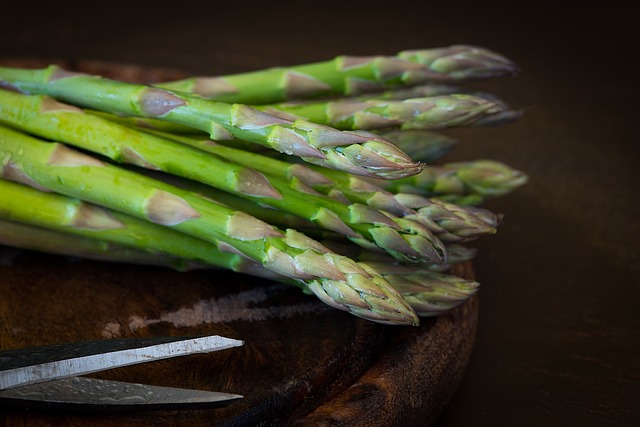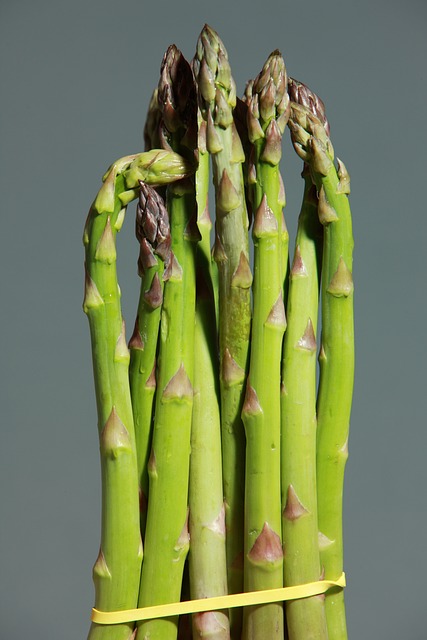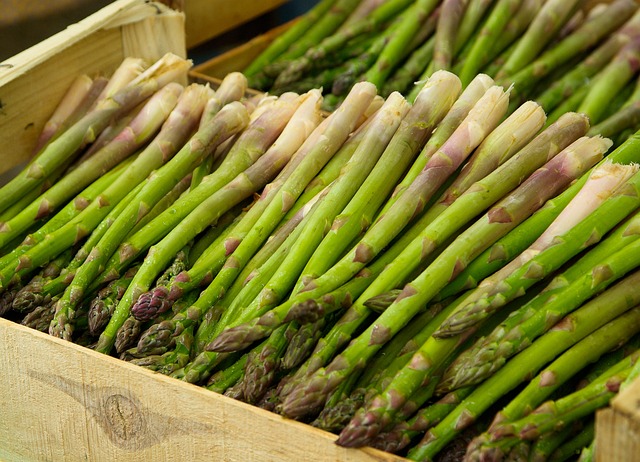Unlock the secrets on what is the best way to grow asparagus at home. From choosing the right variety to providing proper care, learn how to cultivate a thriving harvest.
Asparagus, a perennial favorite for gardeners and gourmets alike, isn’t just a sign that spring has arrived. It’s a nutritional powerhouse that deserves a place in every health-conscious kitchen. With high levels of vitamins A, C, and E, plus fiber and folate, asparagus is a valuable addition to any diet.
Tracing its roots back to ancient times, asparagus has been a culinary delight for millennia. Fast forward to today, and it stands out as a smart garden choice for its sustainability and low maintenance. When grown at home, asparagus’s environmental footprint is minimal, making it a desirable crop for those looking to reduce their global impact.
There’s something special about planting asparagus. Once established, it provides a tasty reward year after year. Next, I’ll take you through understanding the asparagus plant – essential knowledge that will help make your asparagus garden thrive.

Understanding the Asparagus Plant
I believe successful gardening starts with a solid grasp of plant knowledge. When I delve into understanding the asparagus, two things strike me: resilience and patience. This perennial plant, if nurtured correctly, can provide harvests for 15-20 years. Let’s start by dissecting its composition. The asparagus plant primarily consists of spears, ferns, and a crown. The crown is the powerhouse; it’s where the spears shoot up every spring.
Selecting the right variety can either make or break your asparagus garden. Multiple varieties, each with its own strengths, are suitable for different climates and soil types. For example, the ‘Jersey Knight’ is famed for its cold-hardiness, while the ‘Mary Washington’ variety is praised for its resistance to common diseases. It is essential to match the variety with your local environment to ensure robust growth.
Another critical aspect is understanding the asparagus plant’s seasonal cycle. Usually, the plant is dormant in winter, and in spring, the spears rapidly emerge. Those tender spears are what we eventually harvest and enjoy. Following summer, the plant needs to divert energy to its roots to survive the winter and build reserves for next year’s crop. This cycle dictates the care schedule and prepares us for the next crucial stage: planting.
For More On My Ultimate Grow Guide Check These Posts Out

Preparation for Planting Asparagus
If you’ve decided to add asparagus to your garden, you’re in for a rewarding venture. Getting everything right from the start is crucial. The foundation of robust asparagus plants lies in the condition of the soil. Asparagus thrives in well-drained soil with a neutral to slightly acidic pH level. Before you plant, take the time to get a soil test. This ensures you know exactly what you’re working with and what amendments you might need.
You’ll be planting asparagus crowns, which are essentially one-year-old plants. Before you put them in the ground, it’s important to soak the crowns in lukewarm water for 15 to 20 minutes. This wakes them up from dormancy and gets them ready to grow.
Proper spacing is also key. Plant crowns about 12 to 18 inches apart in rows that are 4 to 5 feet apart. Asparagus plants love sunlight, so choose a spot in your garden where they will receive plenty of it throughout the day. Without ample light, the plants won’t be as vigorous, and the stalks will be weaker. For some organic fertilizer information head over to my article here.

Caring for Your Asparagus Garden
Once your asparagus beds are planted, there’s a satisfying journey ahead. It’s a journey of watching those tiny crowns burgeon into ferny spears that grace your dinner table. The right care maximizes both the health of the plants and the flavor of the harvest. Here’s how to care for those tenacious perennials.
Water is crucial, especially in the first two years after planting. Asparagus requires consistent moisture. These spear-touting plants aren’t fond of waterlogged feet, though, so well-draining soil is paramount. I recommend a drip irrigation system or a soaker hose for this task. It delivers water directly to the roots, reducing moisture on the foliage that can invite diseases.
Fertilize asparagus plants in the early spring and again after the final harvest. Use a balanced fertilizer, like a 10-10-10 blend, to provide essential nutrients. Mind the nitrogen component, as too much can negatively impact spear production. Remember, moderation is KEY.
Pests are part of the natural ecosystem, but they need management when it comes to asparagus. Asparagus beetles can be troublesome. Pick these critters off by hand or consider a biological control like nematodes for more severe infestations. Aphids and slugs might also visit. Encouraging natural predators, such as ladybugs for aphids, or setting up traps can help keep their numbers in check.
Asparagus rust and fusarium wilt are common fungal issues. To avoid them, foster air circulation with proper spacing during planting and use mulch to reduce spore spread from soil to plants. If they do appear, organic fungicides can be applied judiciously.
Harvesting time is eagerly anticipated, yet it’s vital to be patient. Don’t harvest in the first year. In the second year, pick sparingly for about two weeks. Afterwards, give your plants time to mature and gather strength for future seasons. A full harvest season typically kicks off in the third year.
This disciplined approach when coupled with watchful care will let your asparagus thrive. Now, as you prepare for the pride of harvest, remember to look forward to the following refinement of your technique. As we transition into advanced tips, it’s about honing those green thumbs for excellence.

For More Information About Asparagus Head Over Here To Wikipedia
Advanced Tips for Asparagus Cultivators
By now, you’ve established a foundational understanding of how to grow asparagus and maintain a healthy crop. Beyond the basics, let’s focus on some advanced strategies to help your asparagus thrive for years to come.
Consider the merits of organic growing methods, such as using natural compost and avoiding synthetic chemicals. This practice not only supports a healthier environment but also produces asparagus that many believe has superior taste and nutritional value.
Think about implementing companion planting. This is the practice of growing plants that benefit each other nearby. Common asparagus companions include tomatoes, parsley, and basil, which can help deter pests and improve soil health.
To ensure the longevity of your asparagus bed, remember that asparagus is a perennial plant. With proper care, it can produce for 15 years or more. Focus on annual maintenance tasks like mulching, cutting back dead foliage, and monitoring for disease to protect your investment.
Finally, always be receptive to new insights and techniques in asparagus cultivation. Stay connected with other gardeners, attend workshops, and keep learning. Your asparagus plants, and your dinner table, will thank you for it.
Follow to stay up to date with new posts!
Last Updated on February 12, 2025 by Mitch

